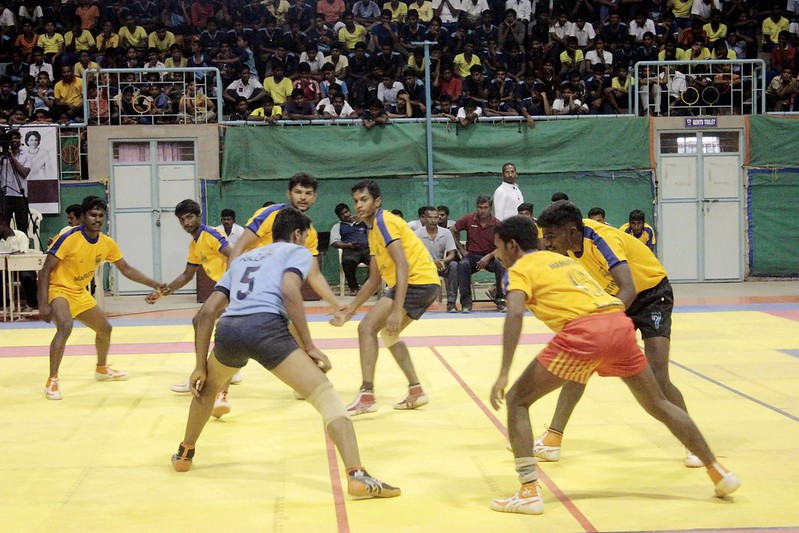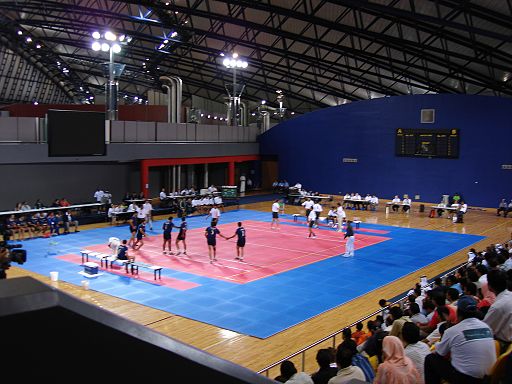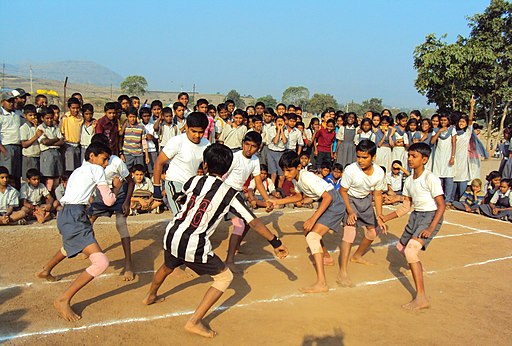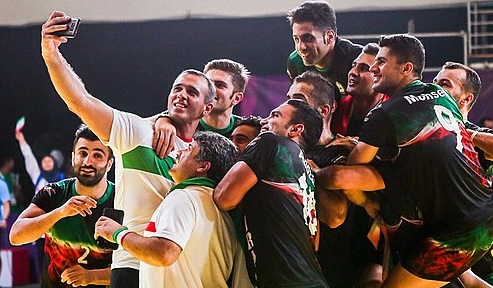Facts and History of Kabaddi Game
Written by Manya Pandey, a first-year undergraduate student.
Did you know there are two major disciplines of kabaddi? The Punjabi or the Circle Style, and the Standard Style.
Written by Manya Pandey, a first-year undergraduate student.
Did you know there are two major disciplines of kabaddi? The Punjabi or the Circle Style, and the Standard Style.
What is Kabaddi?

Kabaddi, as some of you may know, is the most popular traditional game in India. Kabaddi essentially is a contact team sport that is played between two teams of seven players each. It is so popular across the country that many states including Tamil Nadu, Uttar Pradesh, Haryana, and nine others have declared kabaddi their ‘state sport’.
While the country has five main variants of the game, did you know there are two major disciplines of kabaddi? The Punjabi or the circle style and the standard style kabaddi.
What is the difference between the two?
Punjabi kabaddi, also referred to as “circle style” is played more along the traditional borders, usually in circular outdoor mud grounds while the “standard style” is played indoors on a rectangular court.
Standard style kabaddi is most suitably adapted to the professional games and international leagues including the Asian games (much like the Olympics, it’s a quadrennial sports event though only for Asian athletes).
To understand why the game is so popular, you will need to know how to play kabaddi.
Here is how the game works, and how kabaddi is played.

The whole game is about holding your breath and chanting “kabaddi-kabaddi” all the while. The game is basically played between two teams– one on the offence and the other on the defence.
One player named Raider from the offence team invades the defence team’s court chanting “Kabaddi!! Kabaddi ! Kabaddi!” and tries to touch as many defenders as he can and come back to his side of the court without getting caught.
It sounds easier than it is because, in some local variants of the game, players have to hold their breath and keep on chanting kabaddi-kabaddi until they are back to their side of the court. Each breath broken is a point lost. Points are scored based on how many players the raider touches-whereas the opposite team scores by stopping the raider.
How to play kabaddi at an international level?

Most traditional games have a lot of local variants so a standard set of rules is required on national and international stages. In India, the Kabaddi Federation of India (KFI) lays down the rules and the International Kabaddi Federation moderates the global guidelines.
As you know, in professional games the standard style square ground is used and the players take turns crossing the central line and tagging the defending team. Each game lasts a duration of 40 minutes which is broken into the first half of 20 minutes with a 5 minutes break before continuing the next half (20-5-20).
The core idea of the game is to score points by raiding the opponent’s court and touching as many defensive players as possible without getting caught on a single breath. Each raid is timed by a 30-second shot clock (a special countdown timer used in various sports).
We hope you understand how to play kabaddi, now let’s dive into a short history of kabaddi.
History of kabaddi – A journey from mud to mats.

Much like other traditional Indian games, it is hard to trace the history of Kabaddi because back in the day all the teachings were passed down orally from generation to generation. But if you look deep into the archives, you’ll find some notable mentions of the sport during the Vedic period (it refers to the time when Vedas were written).
For the uninitiated, the Vedas are a set of four oldest Sanskrit manuscripts in Hinduism.
Let’s see some ancient records about the history of Kabaddi
The history of Kabaddi is over four thousand years old but it’s a very conflicting one. Some say it was popular among the Yadav people( the worshippers of Krishna). In fact, a Hindu saint named Tukaram mentioned in one of his poems that lord Krishna himself played the game in his youth. That’s not all, some say Arjuna, the finest archer in the great Hindu epic, Mahabharata, deployed some tactics similar to the ones involved in the gameplay of kabaddi. To top it all, there are also a few mentions of Gautam Buddha taking on Kabaddi.
Nothing can be said for sure, but the game seems to have originated in the northern state of Haryana, India.
Here’s a short history of kabaddi
The modern history of Kabaddi as a competitive sport began in the 1920s when nationwide competitions were first organized. The next major step in the history of Kabaddi was its introduction at the Indian Olympic Games in Calcutta in 1938. In 1950 the All India Kabaddi Federation was formed and they came up with the first standard rules of kabaddi.
After that, The Amateur Kabaddi Federation of India (AKFI) came into existence in 1973 after which the first men’s nationals were held in Tamil Nadu (Madras).
But before that Kabaddi was played as a demonstration sport at the inaugural 1951 Asian Games in New Delhi. These developments took the famous Indian sport from villages and mud grounds to international competitions and Kabaddi was added to the Asian Games programme beginning in 1990 after a second demonstration at the 1982 Asian Games again in Delhi.
How did India popularise the sport?

Kabaddi found the international stage at the 1936 Olympics, though it was just an exhibition performance.
How did we get there? Enter, Hanuman Vyayam Prasarak Mandal (HVPM), a small physical education institute based in Maharashtra. In 1936, the Berlin Olympic organisers wished to showcase a few indigenous sporting disciplines before the actual games and sent an invitation to India to fulfil this purpose. Hanuman Vyayam Prasarak Mandal (HVPM), then sent a 35- member team to negotiate the terms and that was when India slid kabaddi along with Mallakhamb and kho-kho into the global spotlight.
The sport bloomed as a collective effort of many so we can’t pick out one founder of Kabaddi but HVPM’s then vice-president Dr Siddhanath Kane was one of the key members that helped India grab a deal at the Berlin Olympics in 1936.
He was an influential man and an executive committee member of the Indian Olympic Association (IOA) and fortunately enough that year’s chief organiser Dr Carl Diem, was a huge fan of Yoga and was already familiar with kabaddi, thanks to his old Indian friend named Laxmanrao Kokardekar.
Other Asian countries joined soon after
The demonstrations in the Olympics caught the attention of other Asian, European and African nations. And in 1951, the sport was demonstrated in the first-ever Asian Games and once again in 1982. And 8 years later it became a regular medal competition at the Asian games.
Three men’s kabaddi World Cups have been held since it became regular in these continent games and all three were dominated by the Indian kabaddi team. They clinched all three gold medals and Iran finished runners-up each time. Women’s kabaddi was included in the Asian Games in 2010 and the Indian team has won both championships since then.
Founder of kabaddi
Kabaddi is so popular in India that it has been dubbed the unofficial national sport of India. There is no officially declared founder of Kabaddi per se, but a man named M.J. Sundar Ram took kabaddi to greater heights across the national borders.
He was one of the greatest players during the 1960s and the ’70s and was selected by the Amateur Asian Federation to popularise the sport outside of the nation. That’s not all, Mr Sundar even went to coach players in Japan, after the Japanese judo and karate fraternity received good words about the sport from a former judo player from India.
So who governs Kabaddi now?
There are a few organizations that are working towards the development of this authentic Indian sport at different levels.
Here’s a brief account.
- The International Kabaddi Federation (IKF) was formed in 2004 and ever since then, they’ve been the global governing body for kabaddi.
- The Kabaddi Federation of India (KFI), which was founded in 1950, has been the national governing body since then.
- Additionally, The Amateur Kabaddi Federation of India (AKFI), founded in 1973 also has the right to modify the rules.
- Also, since kabaddi has surged in popularity in the Asian continent, a dedicated organization, the Asian Kabaddi Federation was formed under the chairmanship of an Indian politician named Sharad Pawar.
Facts about kabaddi
1. A team can have a maximum of 12 players each
In kabaddi. One team can have as many as 12 players but only 7 can take to the ground at any given time.
2. Iran won gold medals in both the men’s and women’s categories against India in the finals.

It was the first time India failed to claim the top spot at any major global kabaddi event. This showcases how the sport is gradually gaining the favour of various nations and how it’s becoming more and more competitive.
3. Kabaddi is the national sport of Bangladesh and Nepal
Kabaddi is known as “Ha-du-du” in Bangladesh. Ha-du-du is their national sport and has no definite rules but a lot of variants in the nation. In Nepal, the sport is even taught to most primary children beginning in about the third grade.
4. Are Indians the pioneers of the sport?
There’s no official statement on that but India has won 7 gold medals in the Kabaddi world cup – more than any other nation. India is also the number one Men’s Kabaddi Team in the International Kabaddi Federation rankings (IKF).
5. Kabaddi is one of the rare team sports that does not require any special equipment.
We are sure you have noticed but kabaddi does not require any sports gear or instruments such as balls or nets. It can be played anywhere without any set-up cost or investment. All you would need is an empty ground and a referee.
6. The sport was also played by the British Army.
Kabbadi was introduced in the United Nations by the Indian, Sri Lankan and Nepali immigrants and became one of the sports the British army played for fun and to keep themselves fit. Kabbadi was also what tempted the British to recruit soldiers from the British Asian community.
Do you know the most popular kabaddi tournament in India?
Pro Kabaddi League (PKL), popularly advertised as Vivo pro kabaddi league is a professional men’s kabaddi tournament which was launched in 2014 and has been the nation’s favourite since. It’s an annual championship which invites various Indian states and cities to compete against each other and has streamed 8 seasons thus far.
8. What do you think happens after two empty raids?
Nothing in most professional matches but in Pro Kabaddi League, the next raider is put into a do-or-die condition. After two empty raids, the next raider must score a point for the team otherwise they are considered out.
9. Here’s another interesting Pro Kabaddi league rule.
If a defending team in a Pro Kabaddi League match has less than four players left on the ground, each tag scores two points. Interesting right?
10. Before we wrap up, here are some quick facts about kabaddi raids.
- When a raid ends with zero points it is called an “empty raid”
- If the raider scores three or more points it is referred to as a “super raid”.
- If a team touches or outs all seven players on the opposing team at once, an “All Out” is issued and two bonus points are awarded for the gallantry.
Do you play or watch kabaddi?
You May Also Like
History And Facts About Jallikattu Game
Facts and History of the Chess Game
History Of Volleyball Game
I Kid You Not now has a large readership across India and also parts of the world. If you want to write for us, you can submit your story here. You can also apply to become a news anchor. Apply here
Better Your Child’s G.K. In 3 Minutes – Get This Free Newsletter
Get fun facts, simple and easy news, quizzes, and lots of other interesting things to read in your mailbox – for free! It’s what we call GK-on-the-go!
Sign up for our free newsletter here






Comments